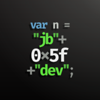Quote:Original post by Iron Chef Carnage
My money's on approach #2.
|
When I'm not worrying about being seen as too old school this is the one I favor. As I said faster to develop and with the number of encounter types really only limited by the creature symbols and library of creature abilities.
Quote:
I'm assuming that the outcomes of interactions wouldn't be affected, and you could get thorough scans or open talks or scorch the earth from the symbolic map as easily as you could from the CYOA menu in option #3.
|
This makes sense although the only thing you might lose is context, buildup and mystery. #3's more a story approach and harder to randomize, but possibly more personal. On the other hand, how many times could you stand to see the 2d encounter pics, even if I could mix and match elements (different background, foreground, element positioning, etc.)
Quote:
A nice, clean gameboard-interface would be easy to pick up and wouldn't become stale after hundreds of missions.
|
It could also support a wider variety of complicating events. I was thinking, for instance, of avalanche, flash flood and earthquakes which produce fissures. These are hard to do even in 3d, but would be impossible with #4 (driving mode). But they could be represented as iconic barriers or event popups with a gameboard motif.
Quote:
If you don't like that element of the game, you just click on the most direct route and fire tachyon beams from the orbiting mothership to get the locals out of the way,
|
Hmmm.... if the tile map where fine enough you could blast terrain. Have to think about this. Be interesting to create craters but things like water flow would get scary.
Quote:
and if it's what you like best, you can spend a big chunk of your play time tracking down, studying, befriending or battling the denizens of each world, taking risks and gaining rewards in each case.
|
Any more detailed thoughts on this point?
I was thinking of using a base Civilization-style combat and movement system if I went with the board game approach. Your expeditions and the flora and fauna would have attack, defense and movement rates.
Combat could be anything from traditional "stack versus stack" or something more elaborate, maybe either a turn-based or time-based with facing direction, rate of fire and turning rates as factors.
It's the tracking, studying, etc. that's traditionally weak, however. From a board game point of view, how would they work-- or more aptly what would be the point of doing these things as opposed to blasting every poor baby harp seal you see?
I was trying to find something more than "scans and samples give you money." It would be cool if you had to know a little about the ecology in order to be effective. Maybe you have to learn that lightning throwing floaters hate radio signals, and thus can be lured away for a time by decoys; or that those armor plated mastodons get very violent when it's raining. (But would this be flavor detail or hassle?)
Quote:
I'm thrilled to see these pictures, it really makes your game seem tangible. I've been watching this project evolve for years now and am incredibly excited about it. When it's done, I can guarantee you that at least one copy will be sold. |
Thanks for the support man!
 Combat, collection, avoidance, etc. would all play out on a map that would be a subsection of a much larger planetary map. Gameplay might break down to:
Combat, collection, avoidance, etc. would all play out on a map that would be a subsection of a much larger planetary map. Gameplay might break down to:  Landing on planets could be a matter of pop-ups with different backgrounds and strategic choices for interacting with life. This approach could also be combined with #2 so that only some squares have these sorts of special interactions. Option 4: Poor Man's Spore My art skills suck but I might be able to pull off mix and match sprites and create an top-down driving game where you pick up minerals, fend off hostile life and try to capture lucrative specimens. Animals would be created in layers, with parts "glued" onto other parts like in these images:
Landing on planets could be a matter of pop-ups with different backgrounds and strategic choices for interacting with life. This approach could also be combined with #2 so that only some squares have these sorts of special interactions. Option 4: Poor Man's Spore My art skills suck but I might be able to pull off mix and match sprites and create an top-down driving game where you pick up minerals, fend off hostile life and try to capture lucrative specimens. Animals would be created in layers, with parts "glued" onto other parts like in these images: 

 A big drawback (besides art quality) would be that creatures would not be very animated and may end up looking robotic. There's more to say about about the pro's and cons of the different options but I'd rather hear your thoughts at this point.
A big drawback (besides art quality) would be that creatures would not be very animated and may end up looking robotic. There's more to say about about the pro's and cons of the different options but I'd rather hear your thoughts at this point.








